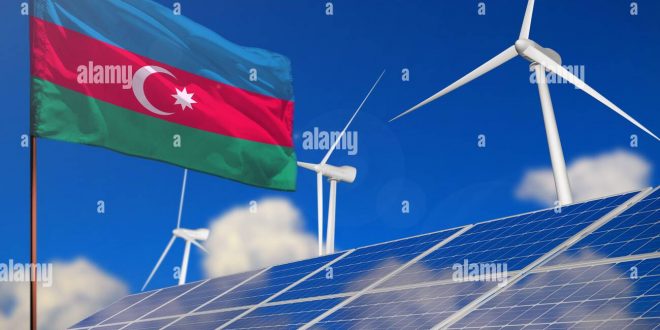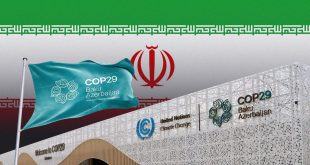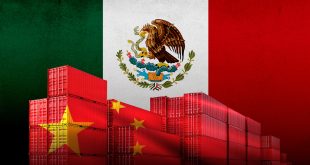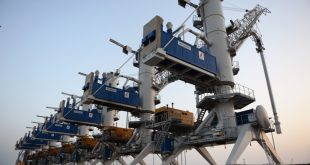Baku, November 1, AZERTAC
Azerbaijan’s hosting of the 29th session of the Conference of the Parties (COP29) to the UN Framework Convention on Climate Change will play a critical role in facilitating the country’s transition to green energy, as well as achieving the goals of renewable energy development. Undoubtedly, the international conference will take important decisions regarding the global transition to green energy. It will enable Azerbaijan to attract important partners for the implementation of the project related to the export of green energy to Europe, which will support the country’s economic growth in the future. Given that Azerbaijan has significant untapped renewable energy potential, the opening of international financial channels for the implementation of such important projects will mark the beginning of a new era of green energy.
In this context, AZERTAC presents an exclusive interview with Umud Shokri, a Washington-based foreign policy advisor and energy strategist:
As a Senior Visiting Fellow at George Mason University and a Black Sea State Department Title VIII Fellow, Umud Shokri conducts research on Azerbaijan’s energy transition and its preparations for COP29.
– What will COP29 mean for the world, and how do COP conferences contribute to global climate efforts?
– COP29 is a pivotal moment for accelerating climate action, with a strong focus on advancing climate finance and strengthening national commitments. Dubbed the “Finance COP,” it seeks to secure funding for developing nations to transition to low-emission economies and enhance climate resilience. Key goals include increasing financial pledges, particularly for transitioning away from fossil fuels, expanding renewable energy, and addressing climate-related loss and damage.
COP conferences are crucial in setting global climate targets, driving policy changes, and facilitating international negotiations. They have produced landmark outcomes, such as the Paris Agreement at COP21 and the establishment of the Loss and Damage Fund at COP27. COP29 is expected to focus on closing the emissions gap, scaling up climate finance, and translating commitments into concrete action to meet the 1.5°C global warming limit.
In addition to addressing emissions and finance, COP29 is expected to promote a just transition for developing countries. This includes discussions on equitable access to clean technologies and ensuring that the benefits of the energy transition are shared broadly. The conference will also emphasize enhancing accountability mechanisms to ensure that countries meet their climate commitments. By strengthening international cooperation and encouraging more ambitious targets, COP29 could further solidify the global framework necessary to confront the climate crisis and chart a path toward sustainable development.
– What are the main goals and priorities of COP29, and what are your expectations?
– COP29 in Baku, Azerbaijan, has several key objectives: advancing climate finance through a new Collective Quantified Goal (NCQG) for developing countries, pushing for more ambitious Nationally Determined Contributions (NDCs), and implementing prior agreements like the transition from fossil fuels. The conference will also prioritize enhancing renewable energy and climate resilience infrastructure by 2030.
Notable priorities include setting the NCQG, promoting green energy zones and corridors, and increasing global energy storage and grid capacity. Azerbaijan’s introduction of the Climate Finance Action Fund (CFAF) will mobilize private sector investments in renewable energy. Inclusivity, such as providing accessible facilities, will be a focal point. Expectations for COP29 include progress on establishing a clear NCQG framework, enhanced NDCs ahead of 2025, and further development of the Loss and Damage Fund. New commitments to renewable energy and increased private sector engagement are also anticipated.
– Is a global green transformation possible, and what challenges do countries face?
– A global green transformation is feasible but requires significant policy support, cooperation, and technological advancements. Renewable energy is becoming more cost-competitive, and international agreements like the COP conferences are propelling the shift toward sustainability.
However, challenges include the massive financial resources needed, particularly for developing countries, and technological hurdles such as energy storage and grid integration. Global coordination is essential to align diverse national interests, and socioeconomic impacts, especially in fossil fuel-dependent regions, need careful management. Success will depend on international cooperation, significant investment, innovation, and strategic policy interventions.
– Can COP29 set a new level of financial assistance for developing countries?
– COP29 has the potential to make progress on climate finance, focusing on negotiating a new Collective Quantified Goal (NCQG) to replace the current $100 billion annual commitment. Developing nations are advocating for much higher financial support, possibly up to $1 trillion annually, while developed countries seek private sector involvement.
Key challenges include disagreements on the scope and structure of the new goal, with developing countries preferring grants over loans to avoid exacerbating debt burdens. Accountability and transparency mechanisms will also be critical, as ensuring that financial commitments are met remains a significant concern. Although COP29 may not finalize the NCQG, it is expected to lay important groundwork for future climate finance goals and improve funding access for vulnerable countries.
Additionally, there is growing recognition that beyond financial pledges, mechanisms for disbursing and utilizing funds effectively need reform. Developing countries often face bureaucratic hurdles in accessing promised funds, which delays climate adaptation and mitigation projects. COP29 could also focus on simplifying these processes, ensuring that smaller nations, particularly those facing the immediate impacts of climate change, receive timely support. This aspect of climate finance is crucial for building resilience and enabling a just transition to low-carbon economies.
– What are the possibilities for transforming Azerbaijan’s liberated territories into a green energy zone?
– Azerbaijan’s plan to transform the liberated territories of Karabakh and Eastern Zangazur into a “green” energy zone is promising, backed by strong government support. Hydropower plays a central role, with 32 hydropower plants generating over 600 million kWh annually, meeting local energy needs and supplying surplus power to the national grid. The government plans to construct 28 more hydropower plants, further boosting clean energy capacity.
In addition to hydropower, solar energy systems and energy-efficient technologies, such as solar-powered streetlights and EV charging stations, are being implemented. These initiatives support the goal of making the region a net-zero emissions zone, contributing to Azerbaijan’s aim of cutting carbon emissions by 40% by 2050.International investment, including interest from companies like BP, is crucial to this effort. Azerbaijan’s comprehensive approach aligns with its national energy strategy and positions it as a leader in climate action, especially as it prepares to host COP29.
– Can Azerbaijan become an exporter of renewable electricity?
– Azerbaijan has significant potential to become a major exporter of renewable electricity due to its abundant renewable resources, government commitment, and strategic partnerships. The country boasts a solar energy potential of 23 GW, along with wind energy capacities of 3 GW onshore and 157 GW offshore. Additionally, hydropower resources further enhance its capabilities.
However, challenges include developing renewable energy infrastructure and transmission systems, which require significant investments. Azerbaijan must also navigate the geopolitical landscape, which poses security concerns for cross-border energy initiatives.
To succeed, Azerbaijan needs to leverage its strategic location, existing energy export infrastructure, and international collaborations, such as the Caspian Sea-European Union Green Energy Corridor. Initiatives like green hydrogen development will be critical for Azerbaijan’s progress, and as it prepares to host COP29, the country could solidify its reputation as a leader in the global energy transition.
Moreover, modernizing Azerbaijan’s national grid is essential for fully realizing its renewable energy potential and becoming a reliable exporter of clean electricity. A more resilient and efficient grid would not only accommodate the increasing share of renewable energy but also enable better integration of energy storage solutions and long-distance power exports. Upgrading transmission infrastructure, including cross-border connectivity, will allow Azerbaijan to effectively supply renewable electricity to regional and European markets, strengthening its role in the global clean energy landscape.





